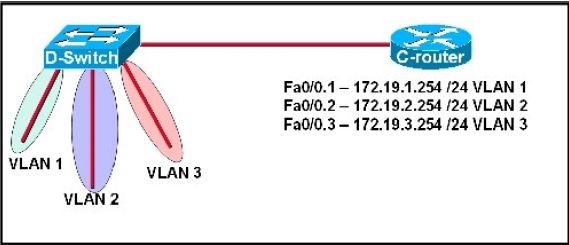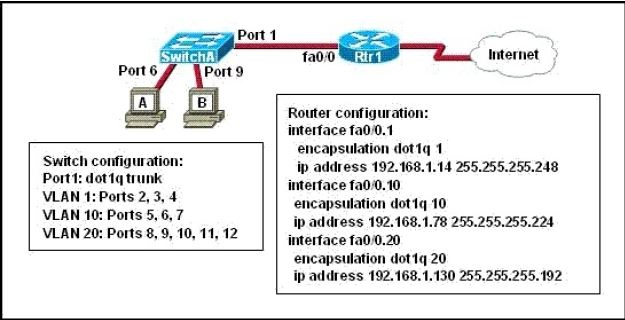Refer to the exhibit.

C-router is to be used as a “router-on-a-stick” to route between the VLANs. All the interfaces have been properly configured and IP routing is operational. The hosts in the VLANs have been configured with the appropriate default gateway. What is true about this configuration?
A.
These commands need to be added to the configuration:
C-router(config)# router eigrp 123
C-router(config-router)# network 172.19.0.0
B.
These commands need to be added to the configuration:
C-router(config)# router ospf 1
C-router(config-router)# network 172.19.0.0 0.0.3.255 area 0
C.
These commands need to be added to the configuration:
C-router(config)# router rip
C-router(config-router)# network 172.19.0.0
D.
No further routing configuration is required.
